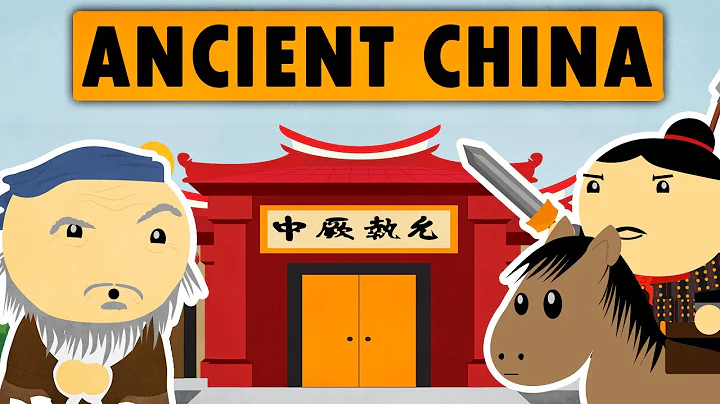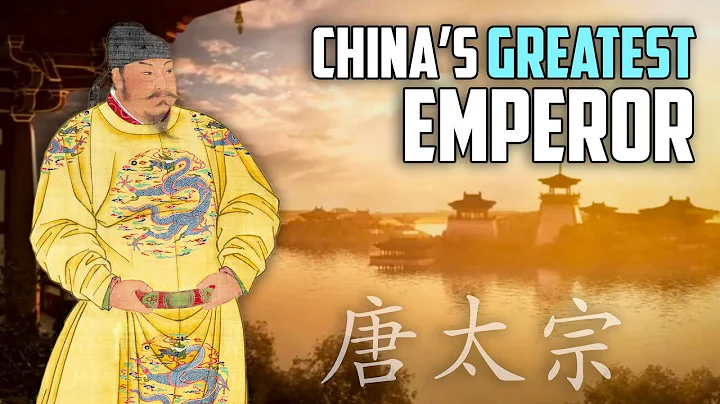Xuanzang The Bay Leaf Sutra retrieved from Tianzhu The Bay Leaf Sutra
- the treasure of the Bodhi Temple
Zhang Mingduo
The story of the Tang monk's search for Buddhist scriptures in the "Journey to the West" has become a well-known and familiar story in the country through the popularity of the TV series. This masterpiece was written by Wu Chengen, a writer in the Ming Dynasty, and was based on the story of monk Xuanzang who went to Tianzhu to learn Buddhist scriptures in the Tang Dynasty.

More than 1,300 years ago, in the third year of Zhenguan of the Tang Dynasty (629 AD), the 29-year-old young monk Xuanzang (real name Chen Yiyi) led his disciples to leave the capital Chang'an and go to the country of Tianzhu ( ancient India ) Study tour, traveled 50,000 miles westward, went through thousands of difficulties and dangers, and arrived at Nalanda Temple, the center of Buddhism in India (formerly located in Bihar, India today) to collect the scriptures. Seventeen years ago, in the 20th year of Zhenguan (646) , 47-year-old Xuanzang returned to Chang'an and brought back a total of Buddha relics, 150 pieces, seven Buddha statues, and 657 scriptures.
Since papermaking had not yet spread to India at that time, the scriptures that Xuanzang brought back were Buddhist scriptures in Sanskrit (ancient Indian written language) carved on the leaves of Bedoro with a stylus. Xuanzang of the Tang Dynasty wrote in "The Records of the Western Regions of the Tang Dynasty - Sinhala Tree" written after returning to China: "Not far from the north of the city is the Duoluo forest, which is more than ten miles away. Its leaves are broad and long, and its color is glossy. All countries use it in writing. "Bedoluo tree, a transliteration of Sanskrit (pattra), is also known as Bedo tree and Doro tree. Ancient Chinese books call it Bibolo tree, Ashoda tree, Bodhi tree , and its leaves can be soaked in water. Instead of paper, ancient Indians often used it to write Buddhist scriptures.

(Bayue Sutra)
The production of this kind of bay leaves used to write Buddhist scriptures requires many complicated processes. The leaves are first picked and stacked, cut into long strips with a knife, soaked in lime water , rinsed with water, dried, and pressed, and then engraved on the page with a stylus, and finally mixed with smoked ink using Jatropha seed oil. Brush on the bay leaf so that the text shows clearly. It is moisture-proof, anti-corrosion, and anti-moth. The handwriting will still be clear after thousands of years, and it is easier to preserve than paper books. Most of the pieces are 60 centimeters long and 6 centimeters wide. A round hole is punched at one end of each piece, and a rope is passed through the hole. The bay leaves are tied into a book, each book contains about ten leaves, and the top and bottom are sandwiched by wooden boards. The two sides of the scripture are coated with gold powder, which makes it look very elegant and luxurious.
The Bayeux Sutra has a long history. As early as the first to the tenth century, Buddhists in ancient India carried the Bayeux Sutra to Central Asia, my country's Tibet, Xinjiang and Nepal to promote Buddhism. Buddhists in these areas also followed suit. He went to ancient India to study Buddhist scriptures and brought back a large number of Bayeux Sutras when he returned home. There are also many famous lines praising the Bay-leaf Sutra in Tang poetry. For example, Li Shangyin 's "To the Great Master Anguo and Jian Zimeng" writes: "A hundred million people worship the lotus throne and listen to the Bay-leaf Sutra." The poem "Inscribed on the Monk's Wall": " If you believe in Bei Duo's true words, you will listen to the bell on the first floor together for three lifetimes. " Liu Zongyuan 's poem "Reading Zen Sutras in Chenyi Chaoshiyuan ": "Idlely holding Bei Ye's book, stepping out of Dongzhai to read."
Bei Ye. Sutras are extremely valuable and rare, and are treasures of Buddhist scriptures. Except for some preserved in Tibetan temples, most of the Bay-leaf Sutras brought back by Xuanzang are preserved in the Big Wild Goose Pagoda in Xi'an. They are rarely spread in other places in China. They are only in the National Museum, Mount Emei, Mount Putuo, Zhenping Bodhi Temple and other places. There are a few versions.

(Aerial view of Bodhi Temple)
Bodhi Temple is located in Laozhuang Town, HT1, ten kilometers north of HT3, Zhenping County, HT1. The temple site is located at the eastern foot of Xinghua Mountain. Walking along the winding path of the mountain from Laozhuang for about 3 miles, you will see hundreds of stone steps. Climb up the steps and look out between the lush forests and bamboos, and you will see a thousand-year-old ancient temple facing the northeast. The temple is very quiet and fragrant. The temples and pavilions are built against the mountain. The mountain gate opens on the left. On the central axis, there are four courtyards: the Yingchunwaiyue Bridge, the Two Buddha Halls, the Main Hall, the Dharma Hall, and the Sutra Collection Building. Buildings such as the bell tower, drum tower , large living room, large fasting room, warehouse, east and west warehouses, and Zen rooms are symmetrically arranged on both sides of the central axis, forming a group of well-balanced and magnificent buildings. Since the temple was built, it has gone through many vicissitudes of life. .
According to the inscription in the "Bodhi Temple Chronicles", the temple was built in the second year of Yonghui (651), the second year of Emperor Gaozong of the Tang Dynasty, by Zhu Zhiqin, a monk from Dengzhou. At its peak, there were more than 300 monks, 70 hectares of fragrant fields, 287 houses, and an area of 33.6 acres. During the fifth year of Huichang in the Tang Dynasty (841-845), Wuzong Li Yan (the 16th emperor of the Tang Dynasty) implemented the policy of "destroying Buddhism and promoting Taoism", and the temple's land and personnel decreased sharply. From the Yuan Dynasty to the 28th year of the Zhengyuan Dynasty (1341-1368), monks Deqin and Chongxin successively expanded the temple when they were abbots, and the appearance of the temple changed slightly. In the 13th year of Chongzhen html in the Ming Dynasty, rebellions broke out everywhere, and the monks fled and became deserted. In the 20th year of Emperor Kangxi's reign in the Qing Dynasty (1681), Liao Chen (named Xiuran), chairman of Xiangyang Shifangyuan, resigned from the hospital and went to Wutai to view the Danxia. When passing by Xinghua Mountain, he saw that the temple was submerged in the grass and was cold. Moreover, the temple is considered to be quite spacious and is an ideal place to promote Buddhism. The disciples cut through thorns and thorns, carved mountains and ridges. After several years of hardship, the fragrant fields gradually increased, and the number of houses increased to more than 100. The monks of Bodhi Temple still regard it as Monk Liaochen is worshiped as the "originator".

(Bodhi Temple Zhishi)
This Zhishi is inlaid on the gable of the west passage of the Dharma Hall in Bodhi Temple. It is made of black marble, 1.1 meters high and 1.8 meters wide. It was made by Zhao Changchun, Xiaolian Fangzheng Liuxi in the Jiyou Year of the Qing Dynasty (1849). The book was established in the 16th year of the Republic of China (1927).
In the seventeenth year of the Republic of China, when Feng Yuxiang was presiding over the government affairs of Henan, he put forward the call to "renovate temples and establish schools." Shi Yupu, the superintendent of Bodhi Temple, invited Li Hansan, the abbot of Xuanmiao Temple in Nanyang, and Shi Runzhai, the abbot of Xiangyan Temple in Xichuan, to go The Nanjing National Government petitioned and the temple survived with approval. There are 88 houses with Ming and Qing architectural styles and 5 monks living in the temple. The stone tablet, snow melting stone and shell leaf scripture originally stored in the temple are known as the "Three Treasures". In 2003, it was announced as a national key cultural relics protection unit by the State Council.

Bodhi Temple, located in a corner of southwestern Henan, is not large in scale, but it possesses national treasure-level rare scriptures. Where did this national treasure come from? How to live in a temple? There are two theories about its origin.
According to the "Zhenping County Chronicle" recorded in the 28th year of the Republic of China, in the 24th year of the Republic of China (1935), Indian friends presented a copy of the "Baye Sutra" to the Nanjing National Government, which was treasured in Nanjing Pilu Temple (Republic of China) The national Buddhist center during that period was located in Hanfu Street, Xuanwu District). Shi Yupuqia, the abbot of Zhenping Bodhi Temple at that time, was in Nanjing. After many mediations, he took one tenth of it and brought it back to Bodhi Temple, which became a treasure of the temple.
Folks have another theory about the origin of the Bayeux Sutra stored in Bodhi Temple. According to the material written by Mr. Zhang Yonggui (I don’t know if he is still alive) and handed over to the Cultural and Historical Committee of the County CPPCC by the Laozhuang Township Cultural Station in 1987, “Not long ago, I visited the old monk Qinghao of Bodhi Temple. When I asked about the origin of the Bayeux Sutra, , this 81-year-old man told me its origins. In the spring of 1929, Qinghao became a monk at Liuyun Temple in Shanghai. Because of his deep study of Buddhist scriptures and his hard work in chanting scriptures, he won the favor of Master Dehao, the abbot of the temple. Appreciation. After studying for seven years, he was ready to return to Bodhi Temple. Since Master Dehao was from Tongbai Taibaiding and had a strong sense of hometown, before Qinghao left, he gave him a copy of the Beiye Sutra from the temple and asked him to take it back. The two scriptures are kept in the collection of Bodhi Temple, and the other one is transferred to the collection of White Horse Temple . These two scriptures were brought back from India by Xuanzang in the 16th century. They are rare in the world and the Bayeux Sutra of White Horse Temple disappeared. Zen Master Qinghao took a risk and hid the Bodhi Temple Shell Leaf Sutra in a cave, so that this precious cultural relic could be passed down. ''
During the Republic of China, there was a popular way of Buddhist cultural exchange, which was the exchange of scriptures between Buddhist temples of a certain scale and taste. The traveling monks visited other temples and gave each other some ancient calligraphy, paintings and scriptures before leaving to promote mutual learning and improvement of Buddhist culture. Although the scale of Bodhi Temple is smaller than that of Liuyun Temple in Shanghai, it also has a certain influence in the Central Plains area. Only by being famous and well-known can we have the ability to collect Bibles. The statement by Mr. Zhang Yonggui, the abbot of Bodhi Temple, that Zen Master Shi Qinghao (common name Zhang Mingsheng, from Zhenping) brought back the Bayeux Sutra from Shanghai still has a certain degree of credibility. .
The author saw in the county cultural relics warehouse that this part of the Bay-leaf Sutra is a Sanskrit scripture bound by the Gushan Sanskrit Book of the Tang Dynasty. The Sanskrit scriptures are illuminated on both sides of the Bay-leaf. There are 26 pages in total, 6 of which are incomplete, and the single page is 50 meters long. cm, width 6 cm, total thickness 15.5 cm, total weight 2.38 kg. The front and back cover are made of sandalwood . There are two round holes in the volume for binding. The periphery of the page is protected by gold powder painting. The font is round, exquisite, simple, beautiful and generous.

Shi Ruci, the current abbot of Bodhi Temple, introduced that this Bay-leaf Sutra is called " Surangama Sutra ", and its full name is "The Great Buddha's Top Tathagata's Secret Instructions and Corrected Meanings of All Bodhisattvas' Ten Thousand Actions First Surangama Sutra", and it is stored in Luoyang's White Horse Temple. The "Lotus Sutra" (full name "Lotus Sutra of Wonderful Dharma", named because the lotus is used to describe the purity and subtlety of the Buddha's teachings) is a rare foreign-language classic in China and is regarded as a priceless treasure. During the "Cultural Revolution", in order to protect this precious cultural relic, the government transferred it to the county cultural relics protection and management office.
"Baiye Sutra" is a precious Buddhist classic and an indispensable first-hand original document for Buddhist researchers. It provides extremely valuable empirical information for studying the introduction and development of Buddhism, the status of Buddhism in the Tang Dynasty, and the expansion of the imperial court's opening to the outside world and extensive cultural exchanges during the prosperous Tang Dynasty.
(The picture of the Beiye Sutra in the article is provided by Su Changjun of the County Cultural Relics Bureau. Written by Zhang Mingduo on June 23, 2022 and edited by Jia Yuanwu)

Source: Qingcai Zhenping
Editor: Qi Jie





















